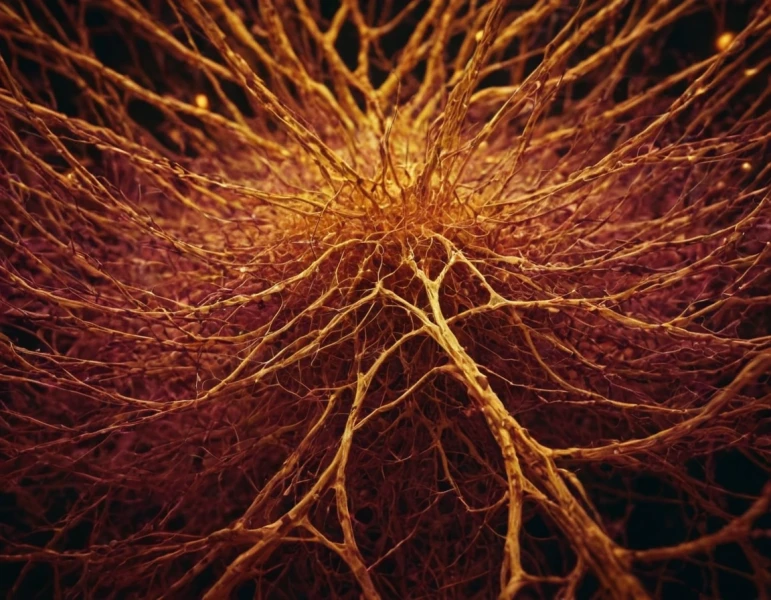Neural Networks: Everything You Always Wanted to Know
Neural Networks: Everything You Always Wanted to Know
Hey, welcome to this journey through the fascinating world of neural networks!
Today it's my turn to go into full geek mode, but don't worry, because I won't go off on a technical tangent... or at least I'll try not to. Over the years, I've come across this topic more than once working on projects that looked like something out of a science fiction movie. And, believe me, at first it seemed like basic Chinese, but over time I got the hang of it.
So, instead of giving you a boring academic rant, I'll tell you what neural networks are in an entertaining way. And if you're a newbie at this, don't worry, because we're going from scratch. But if you're already a veteran, you might learn a new thing or two... or at least remember why you fell in love with this topic in the first place.
What are Neural Networks?
Let's start with the basics. If you've ever heard of artificial intelligence, deep learning or machine learning, neural networks are at the heart of it all. So what are they? Well, they are mathematical models that mimic how the human brain works.

Think of your brain,
Neural networks are made up of layers of artificial neurons called nodes. These layers are organized into three main types:
- Input layer: receives the initial data.
- Hidden layer: processes that data and finds patterns.
- Output layer: delivers the solution or prediction.
- Voice recognition: Every time you talk to Siri or Google Assistant, you're using neural networks. They process your voice, understand what you say and respond with the best possible answer.
- Facial recognition: The security systems that let you unlock your phone with your face rely on convolutional neural networks to analyze your face.
- Medicine: In areas such as disease diagnosis or drug development, neural networks are revolutionizing the way doctors analyze complex data.
- Automation of more complex tasks.
- More efficient neural networks, with lower energy consumption.
- Applications in daily life increasingly natural and integrated into our devices.
How Do Neural Networks Learn?
Here comes the magic. Just as we learn through experience, neural networks learn through data. Imagine you want to train a neural network to identify pictures of cats. You give it hundreds of photos (thousands if you can!) and tell it which ones are of cats and which ones are not. The network adjusts its internal connections to learn to distinguish those images.
This learning process is called backpropagation, where the network adjusts its "weights" or neural connections, minimizing errors with each training cycle.
Types of Neural Networks
There are several types of neural networks, and each has its pros and cons depending on what you want to achieve. Here are some of the most common types:
Artificial Neural Networks (ANN)
These are the most common and serve for many general tasks such as pattern recognition and data classification. They are widely used in machine learning.
Convolutional Neural Networks (CNN)
CNNs are the stars of image recognition. They are able to process images very efficiently, extracting features and patterns that a classical neural network would not be able to identify.
Recurrent Neural Networks (RNN)
These are used to process data sequences, such as text or sound. They are key in applications such as machine translation or speech recognition.
Graph Neural Networks (GNN)
One of the most recent and advanced technologies, GNNs focus on structured data such as social networks or molecular relationships. Here the connections between nodes (people, objects, molecules) are fundamental to solve complex problems.
Real World Applications
Now you may ask: And what is this for?
Good question! Neural networks are being used in virtually every industry. Here are some examples:
My Experience with Neural Networks
You may be wondering how I got into this world. Well, my first contact was with a biometric data analysis project. We needed to create a system capable of detecting patterns in large volumes of physiological data, and neural networks were the perfect solution! I was fascinated to see how, after weeks of training, the network was able to predict certain conditions better than some health professionals.
Over time, I have worked on other machine learning and deep learning projects where neural networks were key. From recommender systems to predictive models in finance - and don't believe it! There are still days when I still freak out about what can be done. Technology continues to advance by leaps and bounds.
The Future of Neural Networks
If the present is already impressive, the future promises to be spectacular. In the coming years, we will see advances in areas such as:
And watch out, it doesn't stop there. The quantum neural networks are already rearing their heads, and that will take all this to another level. We are talking about processing power unimaginable by today's standards.
Conclusion
If I have learned anything in all these years, it is that neural networks are an incredible tool. They allow us to create solutions that previously only existed in science fiction. And best of all is that this is just beginning. If you're interested in the topic, I encourage you to dive right in. The future of artificial intelligence is here, and neural networks are the driving force behind it.
Faculties
Trainings
The faculties embrace diverse academic disciplines and fields of study, opening doors to new perspectives and exploring different spheres of wisdom in a constantly evolving world.














